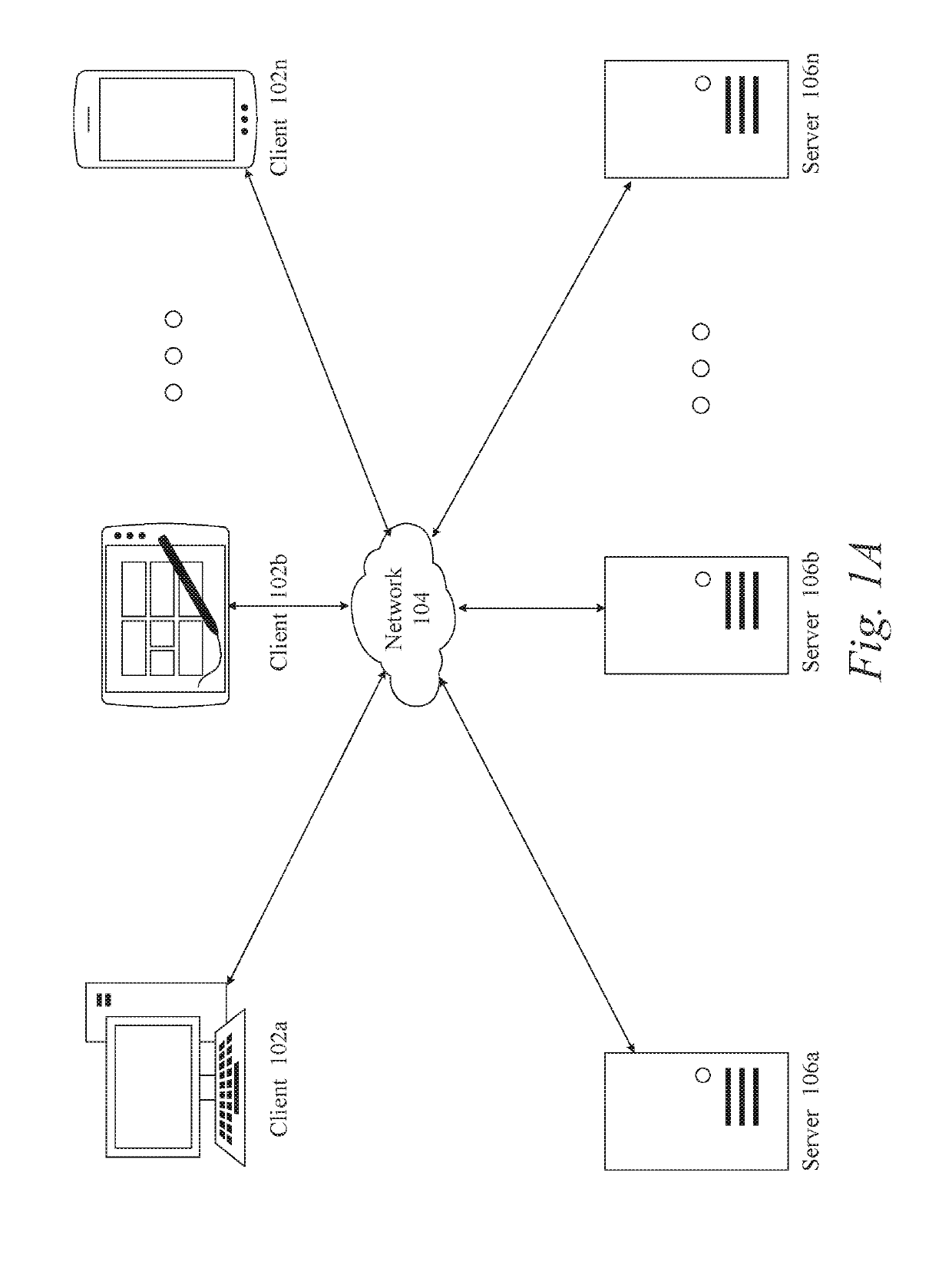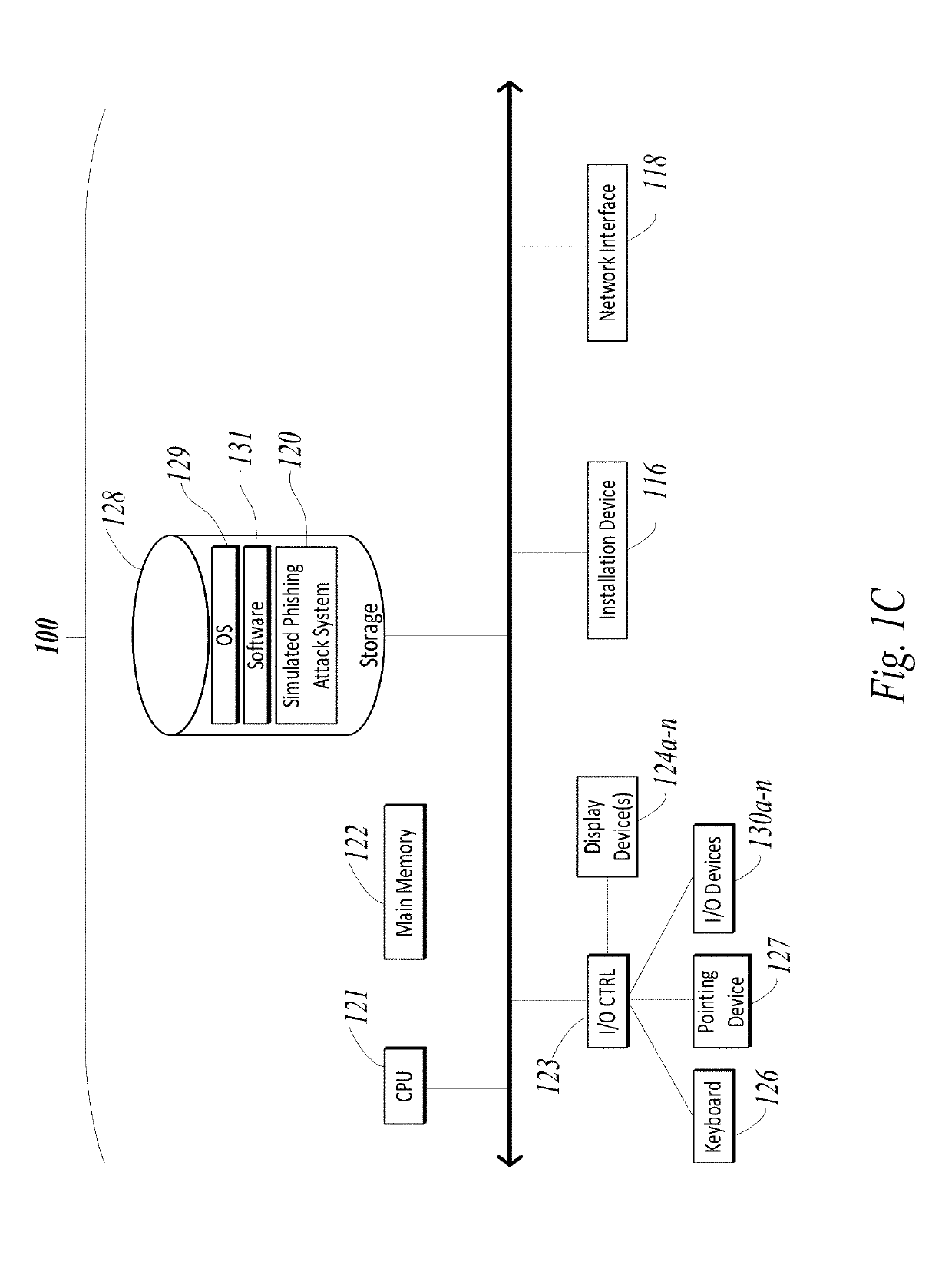Systems and methods for aida based second chance
a security awareness and second chance technology, applied in the field of artificial intelligence driven security awareness systems, can solve the problems of not providing any training on how to approach or act with respect to suspect phishing attacks, the same effectiveness of simulated phishing attacks, and the inability of users to learn the same lessons, etc., to achieve the effect of preventing malicious actions and ensuring the same effectiveness
- Summary
- Abstract
- Description
- Claims
- Application Information
AI Technical Summary
Benefits of technology
Problems solved by technology
Method used
Image
Examples
Embodiment Construction
[0028]For purposes of reading the description of the various embodiments below, the following descriptions of the sections of the specifications and their respective contents may be helpful:
[0029]Section A describes a network environment and computing environment which may be useful for practicing embodiments described herein.
[0030]Section B describes an artificial intelligence network and environment which may be useful for practicing embodiments described herein.
[0031]Section C describes embodiments of systems and methods for creating, controlling and executing simulated phishing campaigns using artificial intelligence as part of a security awareness system.
[0032]Section D describes embodiments of systems and methods for generating, revising, and tuning artificial intelligence models for use as part of a security awareness system.
[0033]A. Computing and Network Environment
[0034]Prior to discussing specific embodiments of the present solution, it may be helpful to describe aspects o...
PUM
 Login to View More
Login to View More Abstract
Description
Claims
Application Information
 Login to View More
Login to View More - R&D
- Intellectual Property
- Life Sciences
- Materials
- Tech Scout
- Unparalleled Data Quality
- Higher Quality Content
- 60% Fewer Hallucinations
Browse by: Latest US Patents, China's latest patents, Technical Efficacy Thesaurus, Application Domain, Technology Topic, Popular Technical Reports.
© 2025 PatSnap. All rights reserved.Legal|Privacy policy|Modern Slavery Act Transparency Statement|Sitemap|About US| Contact US: help@patsnap.com



